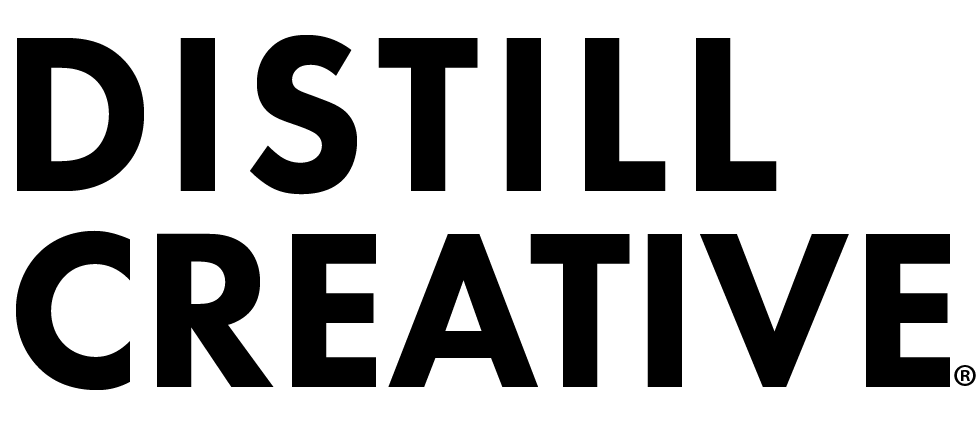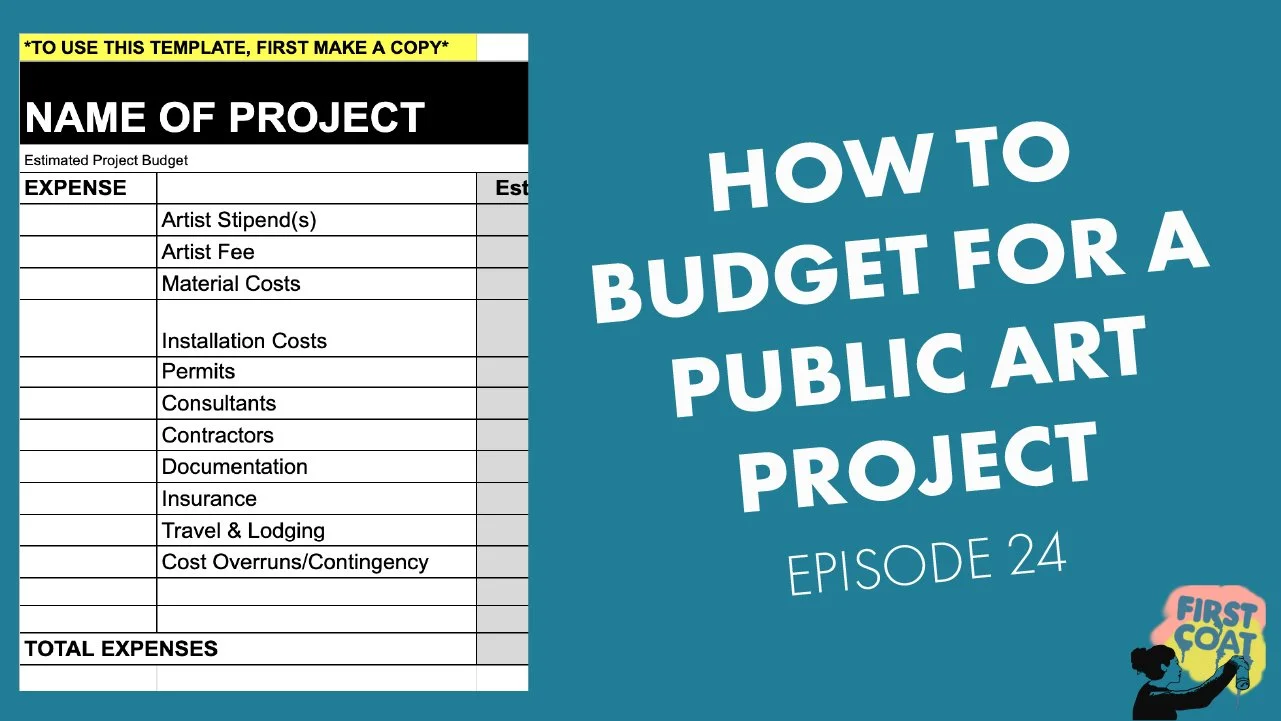How to Budget for a Public Art Project - Ep 24
Hi, I’m Stephanie, if you are new here! Thanks for finding this post. I'm an artist and art consultant. If you are looking for original artwork for your businesses or development, I'm here to help. I curate and produce site-specific art projects for businesses and real estate developers.
One thing I do often is make budgets! Budgets may sound boring, but they are one of the first things you need to figure out when working on a public art project.
If you are a business looking for an artist to do a project for you, you will want to know how much it's going to cost you. If you're an artist you’ll need to know how much money you need if you are applying for a grant or if you are self-funding a project. If you want to get donations from someone to fund the project, having a budget will make it a lot easier. Here is my template for a budget for a public art project. Just copy the google spreadsheet then read the rest of this post to help you fill it out.
Here are my steps for creating a public art budget.
STEP 1 : What’s Your Overall Number?
If you’re a business, all-in how much do you want to spend on this project? If you are an artist, how much do you have or can you raise for this project?
STEP 2 : List Out Your Line Items
List out everything you need to create your art project. This step can may seem easy, but there are a lot of things you might not think about while creating your budget. Here are a few things to consider including in your budget:
Artist Stipend — if you are a business hiring an artist to do a site-specific commission, you may want to get a few proposals from a few different artists before you choose one. Great! Make sure to pay them a fee for their proposals.
Labor/Artist Fee — this can vary greatly. You can ask an artist what their fee is for the project. You should research similar projects to see what other artists have charged. The Americans for the Arts Public Art Database is a great place to start as they usually share project budgets. You can check CaFé or Artwork Archive’s Call for Entry to get a sense of what other people are budgeting for similar projects. You can also search places like the Public Art Archive, Public Art Fund, Beautify, Design Trust for Public Space, or even just Google and reach out to the artist to get a sense of what they charged for that type of work. Keep in mind that a big site with private or institutional funding will have a much larger budget than a small community-based mural. Artists sometimes change their fee based on their funding.
Materials — all materials needed for the project
Installation
Signage
Permits — many art projects in public space will require a permit, make sure to research what is required in your area
Consultants — art consultant or curator, architectural drawings, electrical drawings
Photo & Video documentation — unless you are doing it yourself. This is really important! Murals are essentially temporary and you need a record of the artwork.
Insurance — pretty much any public art project will require insurance
Legal Fees — unless you can do this in house, you'll need a contract between the business and the artist
Contractors — assistants, specialty services
Travel
Contingency — a percentage of the overall budget to cover any unforeseen costs (5-10%)
STEP 3 : Add A Cost For Each Line Item
If you don't know the cost, do research to get a quote. This might mean asking someone who's done something similar at your company, asking another company who's done something similar how much it cost them. Researching on the internet — you may even find the same exact project and how much someone spent on everything. I added some links to get you started above under ‘Labor/Artist Fee’.
If someone did a project that's similar to yours, but they're not revealing the cost, just feel free to reach out to them. They might be happy to share because they probably remember how hard it was for them to figure out.
You can also reach out to me and I can help you out. I charge a fee for budgeting for these types of projects.
STEP 4 : Total It All Up
STEP 5 : Get Feedback
The last step is to review and get feedback. Share it with your team, ask some colleagues, maybe reach back out to those people you reached out to when you were doing research, you can reach out to me and be like, Hey, this is the budget I'm thinking of for this type of project. Does this make sense? And they'll help you see any holes or let you know if you need to add more money somewhere.
Going through the process of making a budget for your public art project will be so helpful for you because it'll give you time to actually think through the project and make you feel really confident when you start reaching out to artists and curating for the project. Next step, check out my blog post on how to find a mural artist and how to hire a mural artist.
Your Host | Stephanie Eche, CEO & Founder of Distill Creative
Stephanie Eche is an artist and art consultant based in Brooklyn, NYC.
Follow Stephanie on Instagram (@distillcreative or @stephanie_eche), Twitter (@stephanie_eche), YouTube (Distill Creative), LinkedIn, and check out her art website.
Support First Coat by backing us on Patreon.


